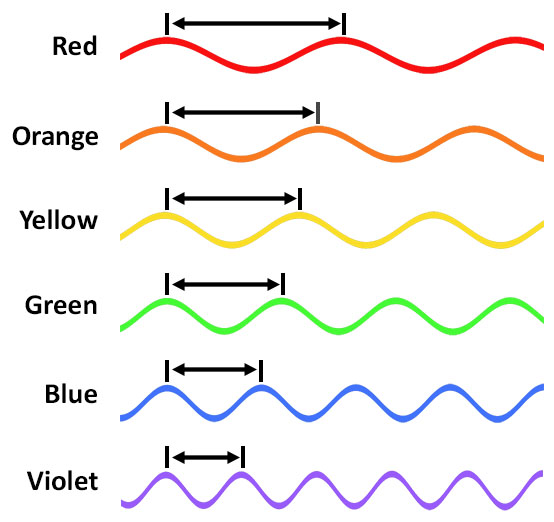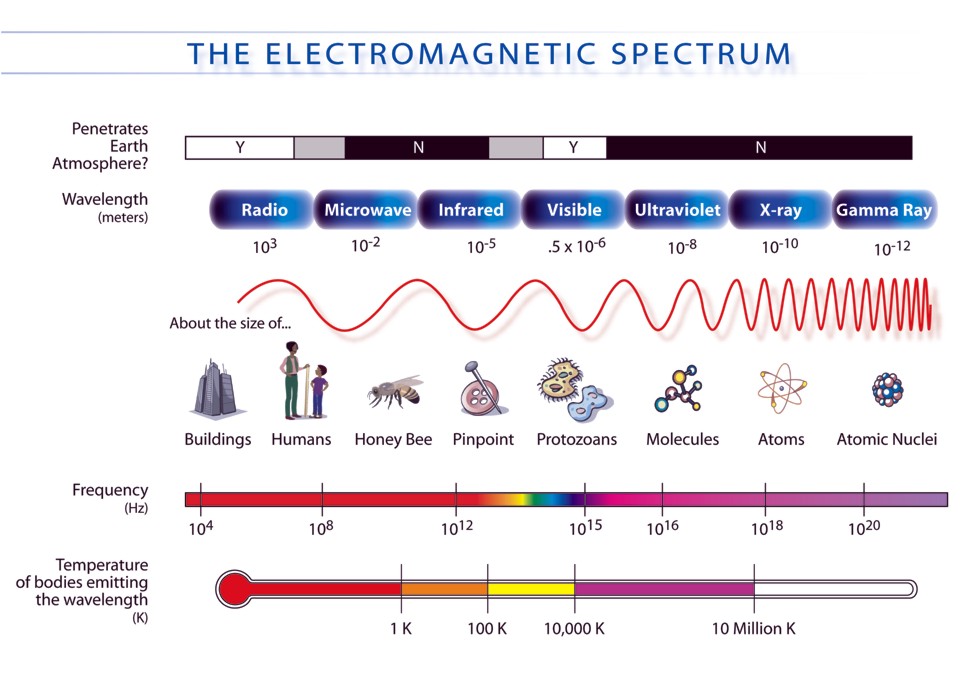
For anyone with working eyesight, color is an integral part of everyday life. We use colors to tell one thing apart from another. Animals use color to detect danger or food.
We are so accustomed to color in our everyday lives that it’s easy to forget that color is just a perception. Color is not a solid object or specific thing. It’s all tied up in the way we perceive certain wavelengths that come our way.
Having a full grasp of the concept of “color as perception” can take some of the mystique out of color and help you use it more effectively in your work.
The Nature of Color
Each color we perceive is simply a different wavelength of electromagnetic waves. Different wavelengths are interpreted by our eyes and brains as different colors. Below are the relative wavelengths that we perceive as different colors. (Wavelengths not to scale)

The concept of “light” is meaningless except for the fact that our humanoid eyes have evolved to detect these wavelengths. Light waves are simply another flavor of electromagnetic waves, the same types of waves as microwaves, X-rays, and ultraviolet (UV) rays, all of which are “invisible” to the naked eye. Our eyes have simply evolved to detect certain wavelengths and perceive them as different colors.

Maybe there are some alien life forms out there that can detect wavelengths that are invisible to us, or perhaps they “see” sound waves (pressure waves from air) or chemical elements. It all depends on how their senses evolved over the millennia.
So now you see that color is just a perception, one that our eyes have adapted to perceive. Who knows, maybe over the next million years we’ll evolve to perceive radio waves and X-rays as colors.
